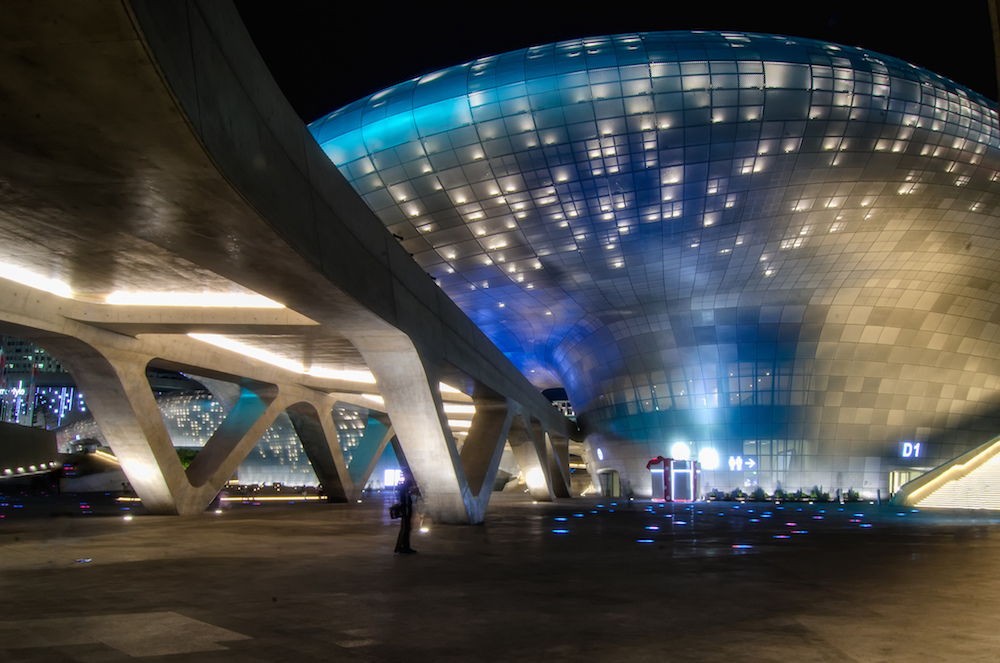Photo slideshow: Coping with climate change in the Middle East and North Africa
The Dongdaemun Design Plaza, designed by famed architect Zaha Hadid, sits in the centre of Seoul, South Korea. This building, with its sleek exterior and trippy curves, was the perfect location for the "Cities Exhibition" at the Seoul Biennale of Architecture and Urbanism. This first-of-its-kind campaign ran from 1 September to 5 November 2017. The Cities Exhibition space, which featured projects from more than 50 cities, explored how urban areas are devising new and creative ways of addressing global problems like climate change.

Dongdaemun Design Plaza in Seoul, South Korea. Photo: 5oulscape via Flickr
The Cyprus Institute in Nicosia and the Future Earth Middle East and North Africa (MENA) Regional Centre had a big presence in the Cities Exhibition. They developed a project that delved into how cities in the region, from Rabat, Morocco, to Muscat, Oman, are addressing a range of global changes – including frequent and life-threatening heat waves, dwindling water supplies and air-borne dust.
This project, called “Connecting Cities: Commonalities & Challenges,” was set in motion and curated by Melina Nicolaides, an artist, activist and independent curator based in Cyprus.
You can read more about the MENA Regional Centre’s involvement in the Seoul Biennale here.
Check out our slideshow to take a tour through this exhibit and to learn about how cities in the MENA region are working together to secure their futures. Unless otherwise specified, photos are courtesy of M. Nicolaides, M. Lange and G. Artopoulos:
Partners on this project included institutions in the cities of Rabat (Mohammed V University), Tangier (Abdelmalek Essaadi University), Tunis (National Engineering School of Tunis), Athens (Institute for Environmental Research and Sustainable Development, National Observatory of Athens), Alexandria (Center for Sustainable Development Studies, Bibliotheca Alexandrina), Beirut (Issam Farres Institute, American University of Beirut), Amman (German-Jordanian University), Kuwait City (Kuwait Institute for Scientific Research), Tehran (Hamkar Parsboom Engineers), Muscat (Oman Cancer Association) and individuals who contributed research and data.
DATE
November 20, 2017AUTHOR
Daniel StrainMelina Nicolaides
SHARE WITH YOUR NETWORK
RELATED POSTS
Spotlight on LMICs – Tired of Breathing in Pollutants? Time for Better Fuel Economy and Vehicle Standards
Future Earth Taipei Holds 2024 Annual Symposium
Spotlight on LMICs – The Future’s Juggernaut: Positioning Research as Anchors for Environmental Health